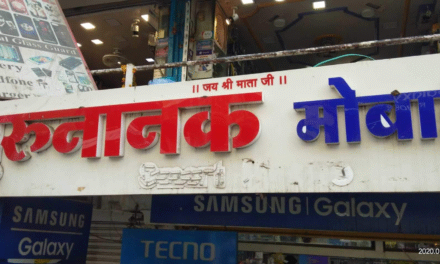Prime Ministers of Sri Lanka: From 1947 to 2025
Explore the powerful legacy of the Prime Ministers of Sri Lanka from 1947 to 2025—leaders who shaped the nation’s past, present, and future.
Sri Lanka, the pearl of the Indian Ocean, has witnessed a riveting political journey since gaining independence in 1948. Central to this transformative journey are the Prime Ministers of Sri Lanka, leaders who have shaped the nation’s destiny with courage, vision, and determination. From architects of freedom to modern-day reformers, the Prime Ministers of Sri Lanka have defined national identity, steered through crises, and elevated the spirit of democracy.
The Birth of a Role – 1947 and the Dawn of Leadership
The office of the Prime Minister was established in 1947, a pivotal moment just before Sri Lanka—then Ceylon—gained independence from British colonial rule. The first among the revered Prime Ministers of Sri Lanka was Don Stephen Senanayake, often hailed as the “Father of the Nation.” With unmatched resolve, he laid the bedrock of parliamentary democracy and initiated vital agricultural and educational reforms that catalyzed the nation’s progress.
Legacy of the Senanayakes
D. S. Senanayake’s untimely death in 1952 brought his son Dudley Senanayake into the limelight. Among the early Prime Ministers of Sri Lanka, Dudley earned a reputation for calm governance and integrity. His tenure symbolized political continuity during turbulent times. His repeated appointments (1952–1953, 1960, and 1965–1970) are testaments to the public’s trust in his leadership.
A New Political Wave – Bandaranaike Era
A monumental shift occurred when S. W. R. D. Bandaranaike, another iconic figure among the Prime Ministers of Sri Lanka, assumed office in 1956. His leftist policies, emphasis on Sinhalese nationalism, and advocacy for Buddhism created seismic political waves. Tragically assassinated in 1959, his vision endured through his widow Sirimavo Bandaranaike—the world’s first female Prime Minister.
Sirimavo Bandaranaike redefined leadership. She was not only a symbol of empowerment but also one of the most influential Prime Ministers of Sri Lanka, serving three non-consecutive terms. Her socialist ideologies, nationalization of key industries, and foreign policy independence realigned Sri Lanka’s position on the global stage.
Years of Transformation and Trials
The late 20th century tested the mettle of the Prime Ministers of Sri Lanka. Leaders like J. R. Jayewardene, Ranasinghe Premadasa, and D. B. Wijetunga navigated through economic reform, civil unrest, and the onset of a brutal civil war. Jayewardene’s sweeping constitutional changes introduced the Executive Presidency, altering the political framework significantly.
Ranasinghe Premadasa, known for his grassroots activism, brought a new style to the role. As one of the dynamic Prime Ministers of Sri Lanka, he focused on rural development and poverty alleviation before becoming President.
The Emergence of Political Titans
From the 1990s onwards, Sri Lanka’s political landscape saw the rise of resilient powerhouses. Chandrika Kumaratunga, daughter of the Bandaranaike legacy, briefly served as Prime Minister before becoming President. Her leadership in the aftermath of civil war efforts and her advocacy for peace made her a memorable part of the tapestry of Prime Ministers of Sri Lanka.
The return of Ranil Wickremesinghe in the 2000s marked a new era. With a polished diplomatic presence and liberal economic policies, he became one of the most enduring Prime Ministers of Sri Lanka, having held the position multiple times across decades.
The Rajapaksa Legacy
No discussion about the Prime Ministers of Sri Lanka would be complete without the mention of the Rajapaksas. Mahinda Rajapaksa, first serving as Prime Minister in 2004 and again later after serving as President, remains a powerful and polarizing figure. His role in ending the civil war in 2009 earned widespread acclaim, but his later terms sparked debates over authoritarianism and nepotism.
His brother, Gotabaya Rajapaksa, though not Prime Minister, played a significant role in national security and governance, reinforcing the family’s political dominance. The back-and-forth leadership between Mahinda and Ranil Wickremesinghe symbolized a power struggle that defined recent Sri Lankan politics.
Economic Crises and Political Rebirth
The 2020s have been marked by economic collapse, inflation, fuel shortages, and widespread protests. In this climate, Ranil Wickremesinghe returned yet again as Prime Minister in 2022, assuming the presidency thereafter amid chaos. His leadership during this national emergency showcased the resilience expected from the Prime Ministers of Sri Lanka.
Following him, Dinesh Gunawardena took office as Prime Minister, symbolizing continuity and control during a time of transition. While facing criticism, his governance has aimed to stabilize the economy and restore public trust.
Evolution of the Prime Minister’s Role
The role of the Prime Ministers of Sri Lanka has evolved dramatically. From being the head of government pre-1978 to a secondary role under an executive presidency, their influence has ebbed and flowed. Yet, the person occupying this office remains a crucial figure in governance, diplomacy, and public discourse.
Powerful Leadership Across Generations
The Prime Ministers of Sri Lanka have embodied every aspect of leadership—vision, sacrifice, diplomacy, and sometimes, controversy. They have faced war, peace, pandemics, economic highs and lows, and public protests. Their decisions have etched indelible marks on the country’s timeline.
Lessons from 75+ Years of Governance
Through examining the Prime Ministers of Sri Lanka, we learn not just political history but lessons in resilience, strategy, and the enduring power of the people’s will. The transitions between dynasties, ideologies, and institutions offer a mirror to the social and cultural evolution of the country itself.
Key Highlights of the Prime Ministers of Sri Lanka
-
D. S. Senanayake: Architect of independence.
-
Sirimavo Bandaranaike: First female PM globally, champion of socialism.
-
J. R. Jayewardene: Introduced executive presidency.
-
Ranil Wickremesinghe: Longest-serving PM, economic reformist.
-
Mahinda Rajapaksa: War-time leader, development champion.
Each of these names represents a chapter in the grand narrative of the Prime Ministers of Sri Lanka, a saga of ambition, ideology, struggle, and triumph.
Looking Ahead: The Future of Sri Lankan Leadership
As we gaze into 2025 and beyond, the path ahead for the Prime Ministers of Sri Lanka remains both challenging and promising. Global economic shifts, climate change, youth unrest, and digital transformation will redefine political priorities. Sri Lanka will need visionary leaders—ethical, inclusive, and innovative—who can inspire hope and steer the nation through uncharted waters.
The legacy of the Prime Ministers of Sri Lanka is not just one of politics—it’s a legacy of people, choices, and enduring resilience. As citizens demand accountability and transparency, the next generation of leaders must rise not just to occupy the office, but to honor its history.
Political Dynasties and Their Influence
One of the most compelling aspects of the Prime Ministers of Sri Lanka has been the undeniable influence of political dynasties. The Senanayake, Bandaranaike, Wickremesinghe, and Rajapaksa families have produced multiple leaders who held the prime ministerial office. These dynasties reflect the intersection of personal charisma, strategic alliances, and loyal voter bases.
For instance, the Bandaranaike legacy continues to echo across generations. Sirimavo Bandaranaike not only shattered global gender norms by becoming the world’s first female Prime Minister, but she also cemented a political pathway for her daughter, Chandrika Kumaratunga, who later became both Prime Minister and President. Their combined leadership added enduring prestige to the line of Prime Ministers of Sri Lanka.
The Rajapaksa family, too, stands as a powerful force. From Mahinda Rajapaksa to Basil, Gotabaya, and Chamal, their political network has deeply impacted policy-making and governance. Love them or criticize them, their dominance in the modern history of Prime Ministers of Sri Lanka cannot be ignored.
Economic Policies Through the Decades
The economic philosophies of the Prime Ministers of Sri Lanka have shifted with global trends and domestic needs. In the early years, leaders like D. S. Senanayake focused on self-sufficiency in agriculture and rural development. His ‘Gal Oya scheme’ was an ambitious irrigation project that boosted farming.
During the 1970s, Sirimavo Bandaranaike’s socialist policies led to nationalizing banks, industries, and transport. Though intended to empower local workers, these measures also faced criticism for stifling private enterprise.
In contrast, the liberal economic reforms introduced by J. R. Jayewardene in the late 1970s opened up the country to foreign investments and privatization. This bold shift changed the direction of Sri Lanka’s economy and is seen as a pivotal move by many economists—an era defined by transformative leadership among the Prime Ministers of Sri Lanka.
Ranil Wickremesinghe, in various terms, emphasized fiscal discipline, international trade, and digital innovation. His attempts to stabilize the post-crisis economy in the 2020s show the continuing pressure on the Prime Ministers of Sri Lanka to act not just politically but economically.
Handling Conflict and Crisis
The Prime Ministers of Sri Lanka have had to lead in times of deep national unrest. The 26-year-long civil war between the government and the Liberation Tigers of Tamil Eelam (LTTE) tested the resolve of leaders across decades. The war left a heavy toll—economically, emotionally, and politically.
Mahinda Rajapaksa’s government eventually ended the civil war in 2009, a feat celebrated by many as a historic victory. However, the aftermath raised concerns about human rights, governance, and reconciliation. His term remains one of the most controversial among the Prime Ministers of Sri Lanka, celebrated for ending war but criticized for centralized power and media suppression.
The 2019 Easter Sunday bombings, which killed over 250 people, again spotlighted the national leadership. The response from the government and its intelligence failures brought immense scrutiny to the existing leadership, and once again highlighted the challenges faced by the Prime Ministers of Sri Lanka in safeguarding the nation.
Political Challenges and Public Protests
In recent years, mass protests and civil disobedience have emerged as defining moments. The 2022 “Aragalaya” movement, fueled by economic collapse, shortages, and inflation, forced Mahinda Rajapaksa to resign as Prime Minister. Citizens occupied key government buildings, demanding new leadership and reforms.
During this volatile period, Ranil Wickremesinghe returned to stabilize the government. While some praised his experience, others viewed it as a tactical move to retain power amidst crisis. These events have reshaped how the Prime Ministers of Sri Lanka are perceived—not as untouchable elites, but as accountable servants of the people.
Gender and Inclusion in Politics
While Sirimavo Bandaranaike set a global precedent as the first female Prime Minister, gender inclusion in Sri Lankan politics has since remained modest. The role of women in politics still needs substantial growth, and the legacy of Sirimavo remains both a proud benchmark and a reminder of unfinished work.
The Prime Ministers of Sri Lanka must increasingly advocate for inclusive policies—ensuring women, minorities, youth, and marginalized groups have representation and voice in governance. Future leaders must rise to this occasion to foster a truly inclusive democracy.
Digital Era and Leadership Transformation
In today’s hyperconnected world, the role of the Prime Ministers of Sri Lanka has moved beyond traditional politics. The digital revolution, social media influence, cybersecurity threats, and AI-based governance have added complex new dimensions.
Sri Lanka’s leaders must now think like CEOs, diplomats, and digital strategists all at once. How they communicate, how quickly they respond to public outrage, and how tech-savvy their administration is will define their success or failure.
Ranil Wickremesinghe and Dinesh Gunawardena have both emphasized modernization, smart governance, and e-citizen services. However, the digital divide remains an obstacle. The challenge for future Prime Ministers of Sri Lanka will be to bridge this gap and push Sri Lanka forward as a regional tech leader.
A Timeline of Key Prime Ministers of Sri Lanka
Here’s a quick overview of some of the most impactful Prime Ministers of Sri Lanka:
| Name | Term(s) | Impact |
|---|---|---|
| Don Stephen Senanayake | 1947–1952 | First PM, agricultural and democratic reforms |
| Sirimavo Bandaranaike | 1960–65, 1970–77, 1994–2000 | World’s first female PM, socialist policies |
| J. R. Jayewardene | 1977–1978 | Open economy, executive presidency |
| Ranasinghe Premadasa | 1978–1989 | Housing & development reforms |
| Mahinda Rajapaksa | 2004–2005, 2018, 2019–2022 | Ended civil war, national infrastructure |
| Ranil Wickremesinghe | Multiple terms since 1993 | Economic reform, crisis leadership |
| Dinesh Gunawardena | 2022–Present | Transitional leadership amid instability |
The Global Stage and Foreign Diplomacy
Foreign policy has also been a key concern for the Prime Ministers of Sri Lanka. Positioned in the Indian Ocean, Sri Lanka has always attracted attention from global powers like China, India, the U.S., and Russia.
Recent Prime Ministers of Sri Lanka have had to balance debt diplomacy with China, strategic partnerships with India, and trade relations with the West. These geopolitical tightropes have required sharp diplomatic instincts.
During the Belt and Road Initiative, Sri Lanka attracted massive Chinese investments, particularly in the Hambantota Port and Colombo Port City. While these projects boosted infrastructure, they also raised alarms about debt traps—forcing the Prime Ministers of Sri Lanka to recalibrate strategies for national interest.
The People’s Expectations from Future Leaders
Today, the people of Sri Lanka are more aware, more connected, and more empowered than ever before. The next generation of Prime Ministers of Sri Lanka must rise to these expectations. They must ensure:
-
Transparent governance
-
Climate action and sustainability
-
Youth employment and skill-building
-
Strong public healthcare and education
-
Unity across ethnic and religious lines
The job is no longer just about managing ministers or departments. It’s about visionary leadership, smart execution, and nation-building at every level.
Conclusion: A Legacy of Leadership and Change
The history of the Prime Ministers of Sri Lanka is a story of resilience, revolution, and renewal. It’s a tale of personalities who fought colonialism, battled civil war, embraced reforms, faced protests, and still stood firm.
From the visionary D. S. Senanayake to the transformative Sirimavo Bandaranaike, from the wartime strength of Mahinda Rajapaksa to the crisis resilience of Ranil Wickremesinghe, the list of Prime Ministers of Sri Lanka reflects the nation’s heart and soul.
As Sri Lanka navigates new challenges in 2025 and beyond, the need for ethical, visionary, and bold leadership has never been greater. The next chapter in the legacy of the Prime Ministers of Sri Lanka is waiting to be written—one of hope, progress, and unity.


